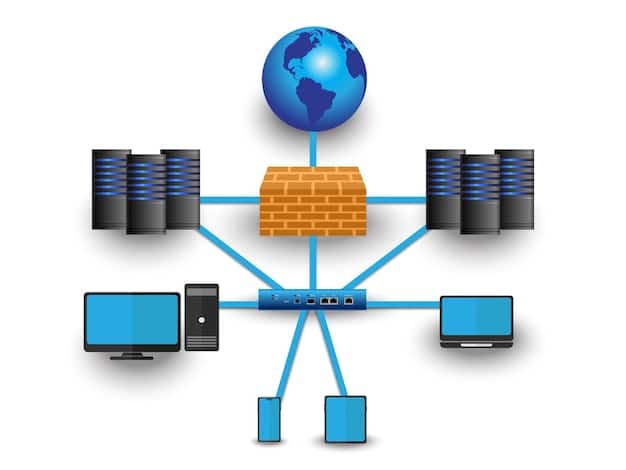Smart Contract Gas Optimization: Reduce Costs by 15%

Smart contract gas optimization involves implementing techniques to minimize the computational resources (gas) required to execute smart contracts on blockchain networks like Ethereum, potentially reducing costs by 15% or more through methods like efficient data storage and optimized code execution.
Smart contracts are the backbone of decentralized applications (dApps), but their execution can be costly due to gas fees. Smart contract gas optimization: reduce costs by 15% with these techniques is crucial for making dApps more affordable and scalable.
Understanding Gas in Smart Contracts
Gas is the unit of measurement for the computational effort required to execute specific operations on the Ethereum network. Every transaction, including smart contract execution, consumes gas. Hence, understanding gas is the first step towards optimizing smart contracts.
When developing smart contracts, it’s essential to be mindful of gas usage. Efficient code can significantly reduce the amount of gas needed, leading to lower transaction costs and a better user experience. Let’s delve into why gas optimization is crucial.
Why Gas Optimization Matters
Gas optimization isn’t just about saving a few cents; it has profound implications for scalability and user adoption. The higher the gas costs, the less accessible dApps become.
- Cost Reduction: Lower gas fees make your dApp more attractive to users.
- Scalability: Efficient contracts can handle more transactions within the same block gas limit.
- User Experience: Affordable transactions enhance user satisfaction and encourage broader adoption.
Beyond these immediate benefits, consider the long-term impact of gas optimization on the entire Ethereum ecosystem. Efficient smart contracts contribute to a more sustainable and scalable network.
Efficient Data Storage
Data storage is a major contributor to gas costs. Storing and retrieving data on the blockchain can be expensive, so optimizing how you store data is critical.
By employing efficient data storage techniques, developers can minimize gas consumption, making their dApps more cost-effective. Let’s explore some proven methods for optimizing data storage in smart contracts.

Using Structs and Mappings Efficiently
Structs and mappings are powerful but can be inefficient if not used correctly. Minimize the number of fields in structs and use mappings judiciously.
When working with structs, consider the order of variables. Solidity packs variables tightly to save gas, but only if they are declared in the right order. Similarly, use mappings only when necessary, as they can consume significant gas.
- Minimize Struct Fields: Reduce the number of variables in structs to save storage space.
- Order Variables Wisely: Arrange variables to allow Solidity to pack them efficiently.
- Use Mappings Sparingly: Avoid unnecessary mappings to reduce storage costs.
Efficient data storage isn’t merely a technical detail; it’s a fundamental aspect of smart contract design. By optimizing your data structures, you can make your dApp more accessible and scalable.
Optimizing Code Execution
The way your code executes can significantly impact gas costs. Simple changes can often lead to substantial gas savings.
Optimizing code execution involves refining the operations performed in your smart contract to minimize computational effort. These tweaks can lead to noticeable reductions in gas consumption.
Short Circuiting and Loop Optimization
Short circuiting can prevent unnecessary operations in conditional statements. Loop optimization focuses on reducing the number of iterations or operations within loops.
In conditional statements, Solidity uses short-circuiting, meaning if the first condition is false in an AND operation, the second condition is never evaluated. Make use of this by ordering conditions based on their probability of being false. Similarly, optimizing loops by reducing iterations or simplifying operations can greatly reduce gas costs.
- Order Conditions: Place the most likely false condition first in AND operations.
- Minimize Loop Iterations: Reduce the number of iterations in loops.
- Simplify Loop Operations: Make the operations inside loops as efficient as possible.
Efficient code execution is about making every line of code count. By applying these techniques, developers can ensure that their smart contracts are as efficient and cost-effective as possible.
Utilizing Libraries and Assembly
Libraries and assembly can provide more efficient ways to perform certain operations, leading to gas savings.
Libraries allow you to reuse code across multiple contracts, reducing redundancy and gas costs. Assembly, on the other hand, provides fine-grained control over the Ethereum Virtual Machine (EVM), allowing for more efficient execution of specific operations.
Leveraging Libraries for Reusable Code
Libraries enable you to reuse code across multiple contracts. Instead of duplicating code, contracts can call functions from libraries.
Libraries are particularly useful for common operations. Instead of including the same code in multiple contracts, developers can deploy a library once and have multiple contracts call its functions. This not only saves gas but also makes the code more maintainable.
- Code Reusability: Share code across multiple contracts.
- Gas Savings: Reduce the amount of deployed code.
- Maintainability: Easily update shared code in one place.
By leveraging libraries, developers can create modular and efficient smart contracts. This promotes code reuse and reduces the overall gas footprint of dApps.
External Calls and Caching
External calls can be expensive. Caching frequently accessed data can help reduce these costs.
External calls, such as those to other contracts or functions, can consume significant gas. Caching involves storing frequently accessed data in memory to avoid repeated external calls, thus reducing gas costs.

Reducing External Dependencies
Minimize your contract’s dependencies on external calls. The fewer external interactions, the lower the potential gas costs.
External calls can be a significant source of gas consumption. Reducing these dependencies can lead to substantial savings. Strategies such as caching, or rewriting code to minimize external interactions help to reduce gas usage.
- Minimize Calls: Reduce the number of external function calls.
- Cache Data: Store frequently accessed data to avoid repeated calls.
- Rewrite Code: Refactor code to reduce external dependencies.
By carefully managing external calls and employing caching techniques, developers can significantly reduce the gas costs associated with their smart contracts. This leads to more efficient and cost-effective dApps.
Gas Optimization Tools and Techniques
Various tools and techniques can aid in gas optimization, providing valuable insights and automated improvements.
Gas optimization tools provide valuable insights into gas usage patterns in smart contracts, helping developers identify areas for improvement. Techniques like code analysis and automated optimization further enhance efficiency.
Static Analysis and Gas Audits
Static analysis tools can identify potential gas inefficiencies. Gas audits provide expert reviews of your contract’s code.
Static analysis tools automatically analyze source code to identify potential inefficiencies and vulnerabilities. Expert gas audits involve in-depth reviews by experienced developers, providing valuable recommendations for gas optimization.
- Automated Analysis: Use static analysis tools to identify potential issues.
- Expert Reviews: Seek gas audits from experienced developers.
- Continuous Monitoring: Regularly assess your contract’s gas usage.
By leveraging these tools and techniques, developers can continuously monitor and improve the gas efficiency of their smart contracts. This proactive approach ensures that dApps remain cost-effective and scalable.
| Key Point | Brief Description |
|---|---|
| 💡 Efficient Storage | Optimize data structures like structs and mappings to minimize gas costs. |
| 🚀 Optimize Code | Implement short-circuiting and loop optimization to reduce computational effort. |
| 📚 Use Libraries | Leverage libraries for reusable code to reduce redundancy and gas costs. |
| 🌐 External Calls | Reduce external dependencies and use caching to minimize gas consumption. |
FAQ
▼
Gas is a unit that measures the amount of computational effort required to execute operations on the Ethereum network. Each transaction, including smart contract execution, consumes gas, paid for with Ether (ETH).
▼
Gas optimization reduces the cost of executing smart contracts, making dApps more accessible and scalable. It improves user experience, lowers transaction costs and enhances the Ethereum network’s overall efficiency.
▼
Efficient data storage minimizes the amount of data stored on the blockchain. Using techniques like minimizing struct fields and ordering variables strategically can lower gas consumption significantly.
▼
Techniques include short-circuiting in conditional statements, which prevents unnecessary operations, and optimizing loops by reducing iterations or simplifying operations within them, leading to gas savings.
▼
Libraries promote code reusability, reducing code duplication and deployment costs. Assembly offers fine-grained control over the EVM, allowing for more efficient execution of specific operations, further optimizing gas usage.
Conclusion
By implementing these smart contract gas optimization techniques, developers can significantly reduce gas costs, potentially achieving savings of 15% or more. This not only makes dApps more accessible and affordable but also contributes to a more sustainable and scalable Ethereum ecosystem. As the blockchain landscape evolves, gas optimization will remain a critical factor in ensuring the long-term viability and success of smart contracts.





